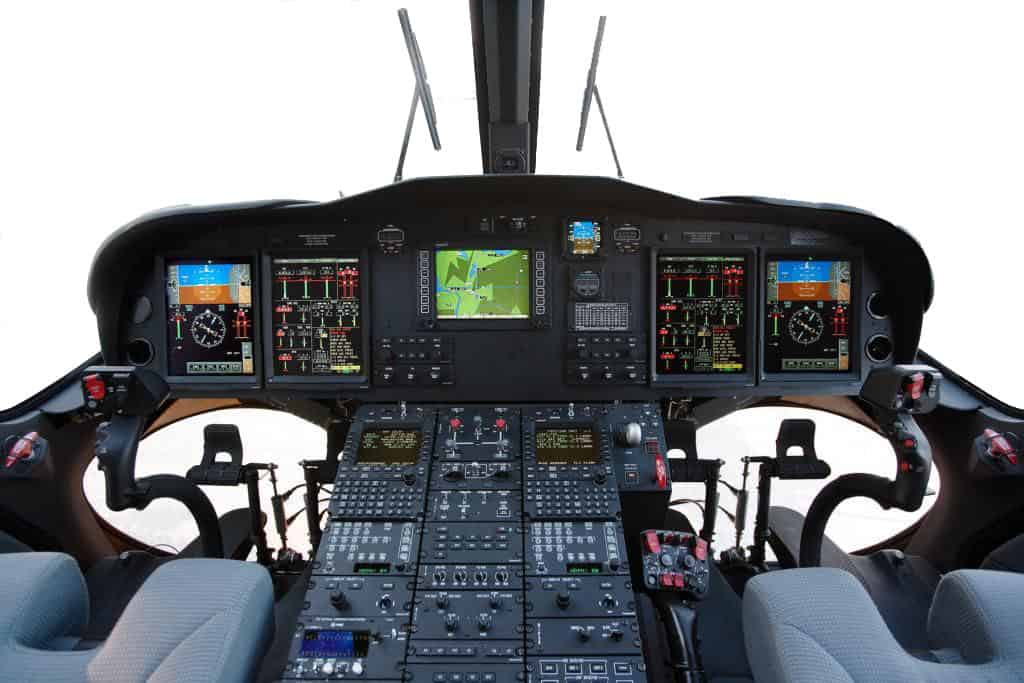
When you walk onto an airplane to take a flight you have probably glanced through the open cockpit door to be greeted with a room that seems to be full of screens, buttons, switches, dials, and circuit breakers. To most people, this seems like a scene from the Starship Enterprise and you may wonder how the pilots know what each bit does!
Many of the buttons and switches in aircraft cockpits are duplicated for both pilots to allow the aircraft to be flown from either seat. Buttons & switches in the middle control aircraft systems like lights, climate, fire, and other equipment that are generally not used for primary flight control.
Even as pilots, when we first transition from a basic training aircraft into the cockpit of a modern airplane or helicopter we too feel the same. It’s an overwhelming feeling of ‘I have no idea what the heck all this stuff does‘ but with training and time, it soon becomes familiar.
I still remember showing my dad the cockpit you see above of the AW139 helicopter I was flying and his eyes turned to dinner plates! This article is how I explained the cockpit to him so he understood what ‘all that stuff’ was.
What Do All the Aircraft Cockpit Buttons & Switches Do?
Aircraft are complex machines comprising of many, many systems that all need some form of input and control from the pilots to operate correctly and at the right times. The cockpit is where most of these input devices are congregated to allow pilots to access every item in one place and that is why there seem to be so many buttons, knobs, and dials.
If you look closely at a modern cockpit you may notice a lot of items are duplicated for both seats. This is to allow either pilot to control a system no matter which seat they are sitting, whether they are flying the aircraft or monitoring the aircraft. This is the main reason why there seem to be so many things – Duplication.
In front of and directly next to each pilot seat will be its own set of controls, buttons, dials, and displays so that no matter which seat a pilot is sat in the primary devices used to control and protect the aircraft are immediately to hand.
Real World Example:
In the helicopter cockpit you see above, the flying pilot sits in the right seat, while the pilot monitoring and doing all the radio and navigation work sits in the left. When coming into a hospital helipad, normally the pilot in the right seat does the landing but depending on where the wind is coming from and the approach path to be flown, the instrument panel can block the view of the flying pilot.
At this point, the pilot in the left seat takes control and completes the approach and landing with minimal effort because the cockpit layout around each seat is almost identical. If any buttons need to be pressed it is easily done from any seat.
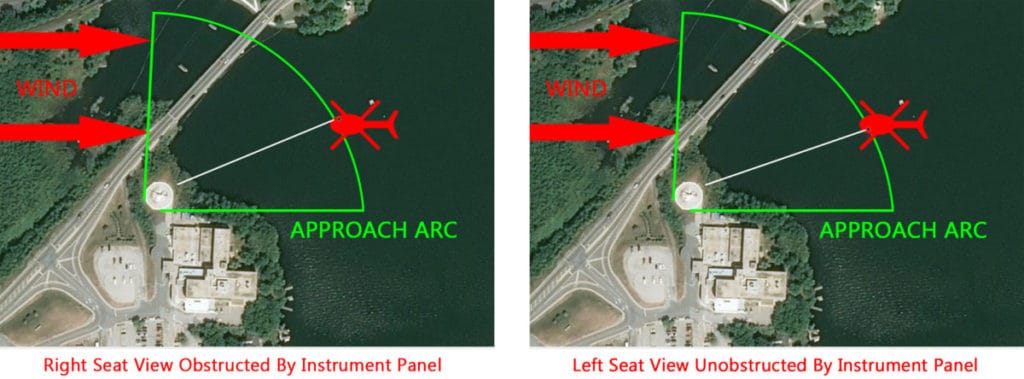
To help explain all the ‘Stuff’ you see in the cockpit, these items can be categorized into several areas:
- Inputs
- Outputs
- Data
- Communications
- Control
- Circuit Protection
Let’s take a look at each of these categories:
Inputs
When a system needs to be turned on or set to a specific setting by the pilot it needs a device to allow them to control this system. Buttons, knobs, counters, dials, and levers are the most common devices used in aircraft cockpits.
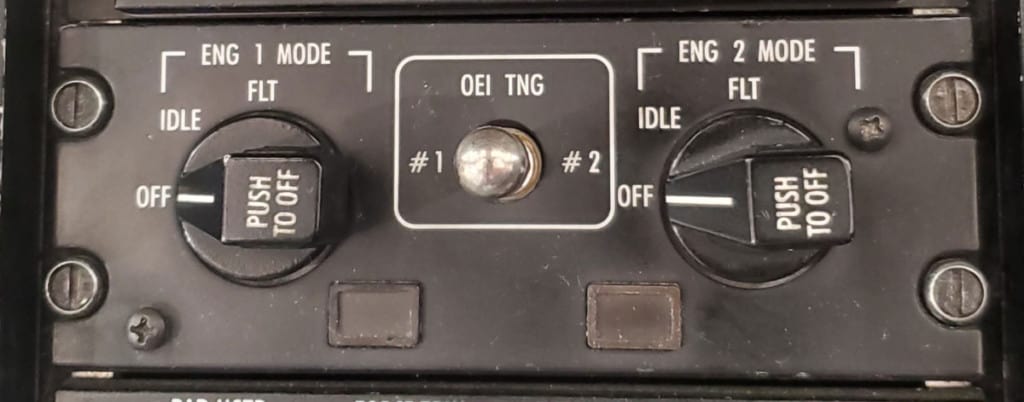
For example, buttons to turn on the aircraft landing lights and window wipers, dials to set the temperature for the cockpit, or a lever for selecting the landing gear to its down position.
Outputs
When a system is in a certain configuration the pilots may be required to know what configuration it is in to allow them to make decisions based on its operation or for checking against a step within a checklist. Most outputs are displayed as LED indicators, needles, or numerical readouts.
For example, when the landing gear is fully down and locked in position it shows 3 green indication lights on the landing gear panel. During its movement from stowed to locked, it shows 3 yellow indication lights, or if one becomes seized and is not locked, it can show a red indication for that particular leg.
Another example could be the numerical display of one of the communications frequencies. Buttons are used to input the desired frequency and the numbers show the pilot the frequency they inputted and are listening/transmitting on.

Join My Newsletter & Get Great Tips, Information and Experiences To Help You Become a Superb Pilot!
Data
Data is all the information pertaining to the control and position of the aircraft. In modern cockpits, all the flight data is collated onto digital glass screens in front of each pilot. In older aircraft, each parameter was shown on an individual dial that took up a lot of room. Have a look at this picture of a B-52 Stratofortress cockpit and you will see what I mean! – (Wiki Link)
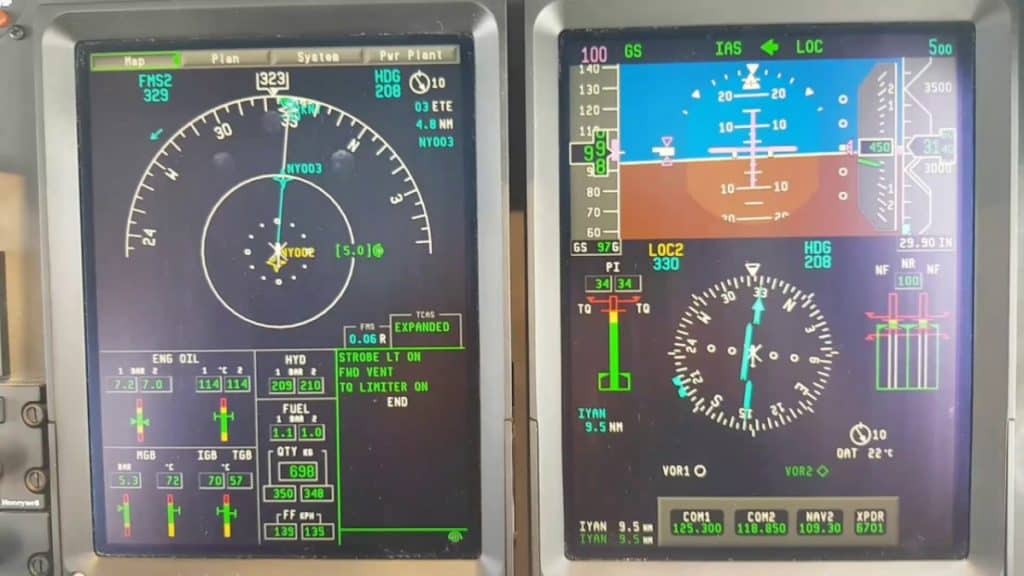
Altitude, airspeed, heading, bank angle, rate of climb, course, waypoints, weather radar, other aircraft locations, and dozens of other flight parameters are easily shown. The status of aircraft systems can also be shown by scrolling through different pages to allow quick visual inspection – Engines, hydraulics, oil, electrical, climate, etc.
Communications
Being able to communicate with other aircraft and air traffic control is one of the main ways our skies remain safe. The ability to talk and hear clearly is paramount and during a flight, a pilot could talk to over a dozen different people all on different frequencies. Modern cockpits come with multiple radios to allow pilots to talk just by inputting a set frequency and pressing the microphone button. Many cockpits allow the monitoring of multiple frequencies on different radio bands.
Even in my simple Astar helicopter, I have two VHF radios for listening and communicating with pilots and ATC, then two FM radios for talking to ground crews when working on wildfires or construction jobs.
Control
Pilots need to be able to control the aircraft to get it into a safe flight configuration before handing it over to the automated systems. We are all familiar with airplane yokes, throttles, and pedals but there are also controls for trim, landing gear, brakes, and other systems which need manipulation in the cockpit.
Circuit Protection
The ceiling of most aircraft is where you find the circuit breakers that protect each system. There can be a huge amount of circuit breakers in a cockpit and most of them need to be in easy reach of the pilot/s to be able to be reset in flight if required by the emergency procedures checklist.
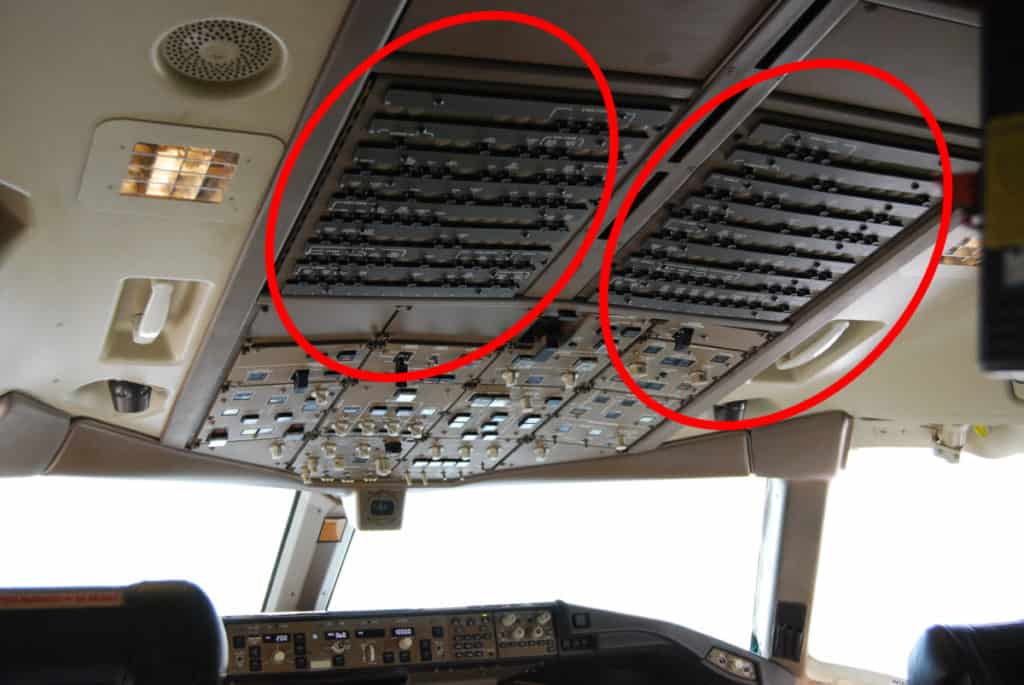
The circuit breakers are usually split into zones to allow for easy identification by the pilots under a high-stress emergency.
The whole array of all the items mentioned above can seem like cockpits are crammed with stuff, and in some aircraft they are, but there is logic to each part and where it is located, well in modern aircraft anyways. I’ve been in some older aircraft where an item was placed just because that was the only space available, today, there is a lot more thought behind its placement.
How Are Aircraft Cockpits Designed?
Everything in today’s world is about ergonomics and providing the operator/s with the simplest, easiest, and most intuitive way to use it. Aircraft cockpits are no different and take months, if not years of layout design to give the pilots the perfect operating environment from both seats.
Flying an aircraft is one thing when it’s all working as it should, but when the proverbial stuff hits the fan, the pilots need logical cockpit layouts to ensure emergency checklists and procedures can be carried out efficiently and accurately to ensure the safety of everyone on board and around the aircraft. This also includes being able to reach every item from either seat so that either pilot can ‘Run The Checklist’ while the other pilot handles the flying.
For this reason, cockpits are split up into panels that house a collection of systems to form a logical layout.
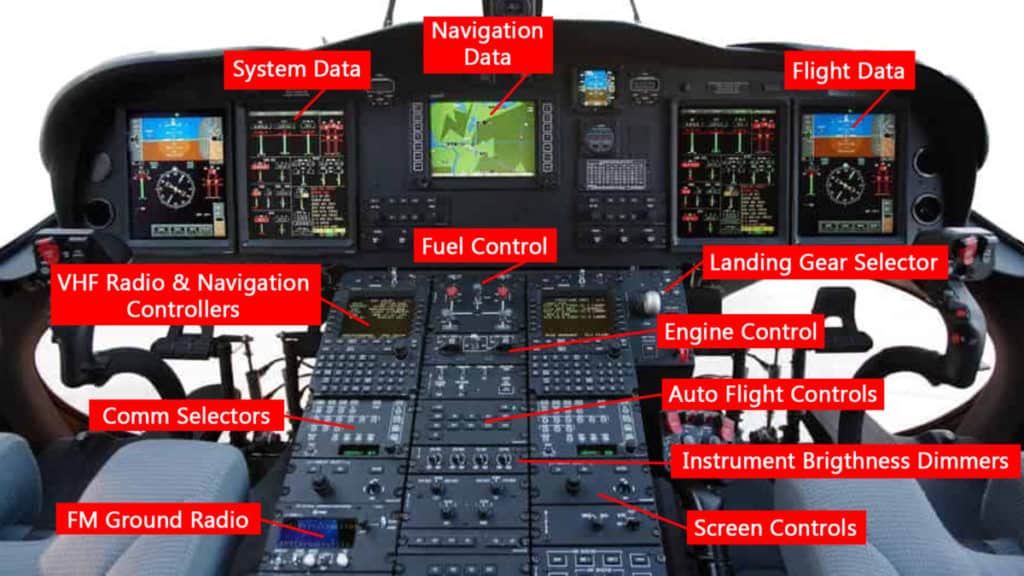
One of the problems that cockpit designers face is trying to fit all the items needed by the pilot/s into one area. Since the advent of touchscreens, they are starting to become more and more prevalent, especially in airplane cockpits. If you take a look at a cockpit like the Airbus A350 XWB you can see there are hardly any buttons at all as it is mainly all controlled via touch buttons on the screens.
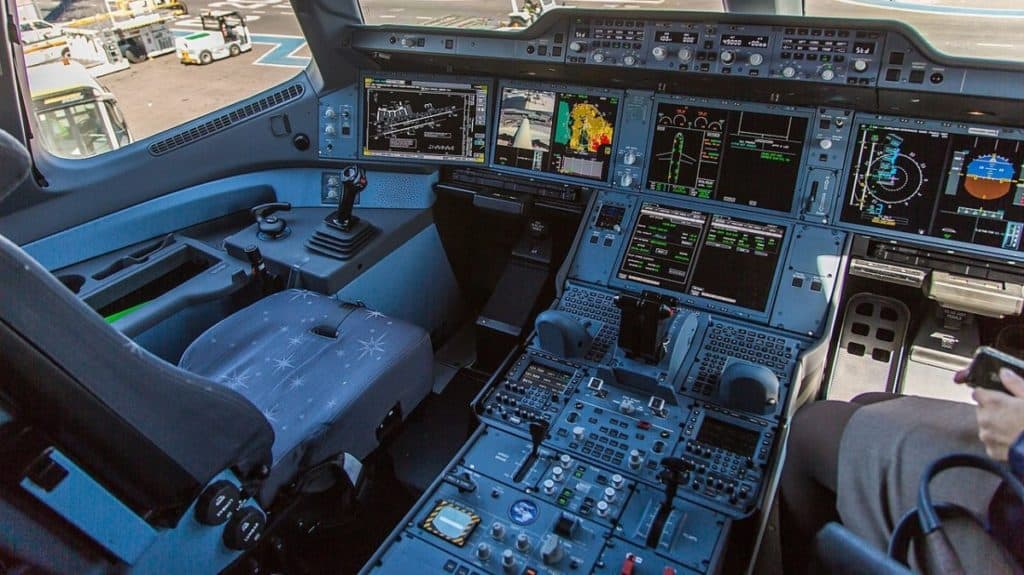
Do Pilots Know What Every Cockpit Button Does?
Pilots train rigorously and frequently to learn and remember every system on the aircraft and what its buttons, dials, knobs, and levers in the cockpit do. This allows for the correct use of each system and how it operates during normal and emergency procedures. Most airlines utilize training devices like full-motion simulators or stationary touchscreen simulators known as CSTs – Cockpit Systems Trainers or CPTs – Cockpit Procedures Trainers.
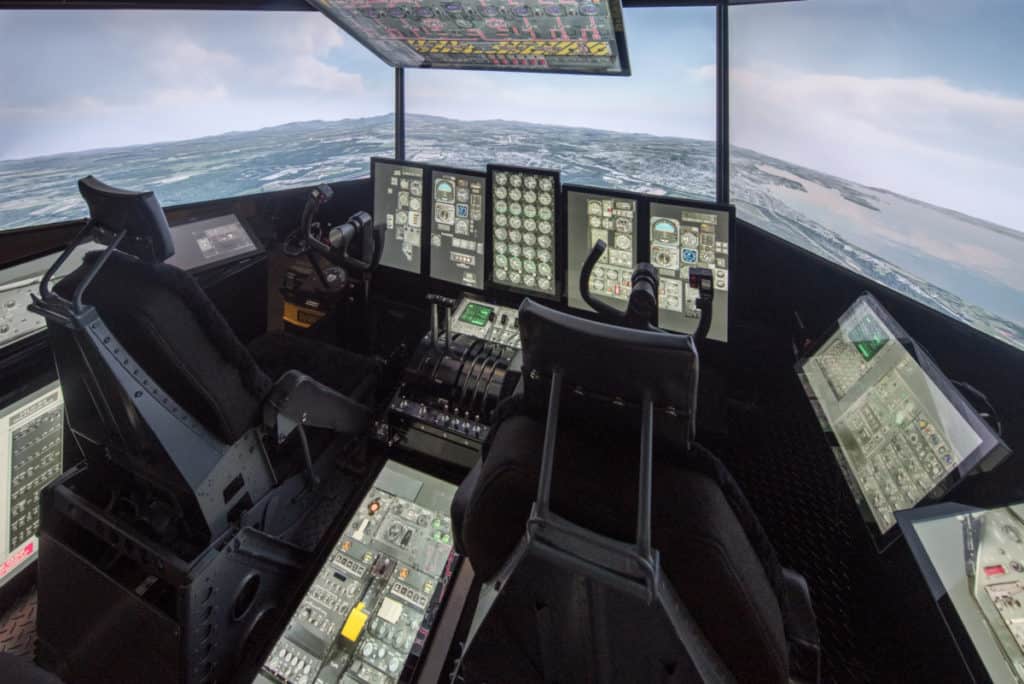
Cockpit Procedures Trainers are a great tool for running normal and emergency aircraft checklists for pilots new to the aircraft as they allow for rapid, repeat training to be completed at a fraction of the cost of a full-motion simulator. The touchscreen buttons act just like they do in the real aircraft giving the pilots time to build muscle memory of the items’ physical location in the cockpit, and what they can expect to see and hear when any button, dial, switch, or lever is activated.
Once the rookie pilots have completed the training syllabus on the CPT they progress into the full-motion simulators to begin flying the aircraft and dealing with the normal and emergency checklists while having to fly and control the aircraft just like they would in the real aircraft.
After using both of these types of training devices you soon become enveloped in the training and you forget you are in a training device and not the real aircraft, especially when in the full-motion simulators.
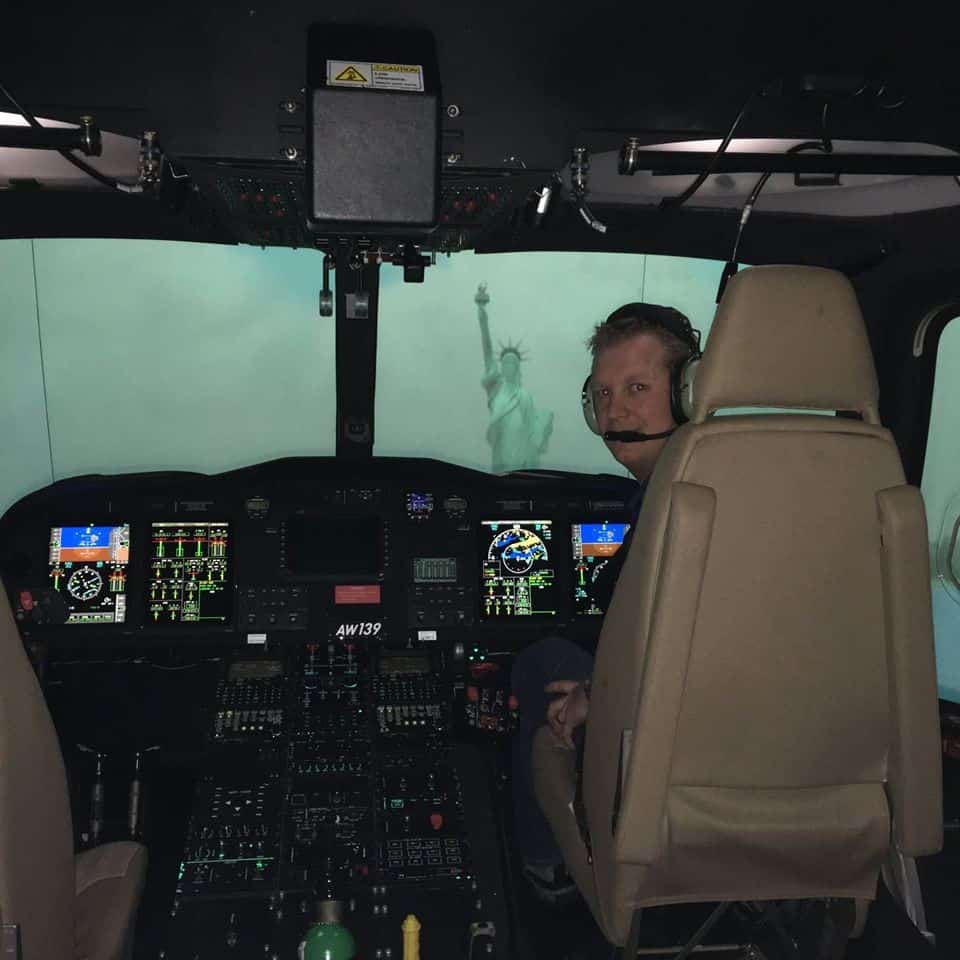
Each pilot must complete an intense initial training program usually over many, many weeks to learn the aircraft, then they will be subject to intense testing both on paper and in the simulator to ensure they know how to operate all the items in the cockpit both under normal flight conditions and the worse situations a pilot can find themselves in.
After initial aircraft type training, pilots will then undergo further simulator training multiple times each year depending on each company’s individual training policy to ensure they stay fluent in their procedures, checklists, and knowledge should an incident occur while in the air.
I can tell you that after a 4 hour training session in the sim with all hell breaking loose you are physically and mentally drained, but it is surprising how well you become familiar with every button, dial, needle, switch, and lever in the cockpit!
To Finish
Most of the buttons you see in an aircraft cockpit are duplicates to allow the aircraft systems to be operated and controlled from either pilot seat. The large amount of circuit breakers further adds to what seems like a room just covered floor to ceiling in stuff.
As pilots become familiar with the aircraft the items in there soon become less foreign and more just a part of their office. Think of a modern cockpit like a library, to the untrained eyes it’s just rows and rows of shelves and books, but ask a librarian to help you find a book and they will know exactly where to find it!
Further Reading
If you found this article helpful, may I suggest a few more for you to read:

